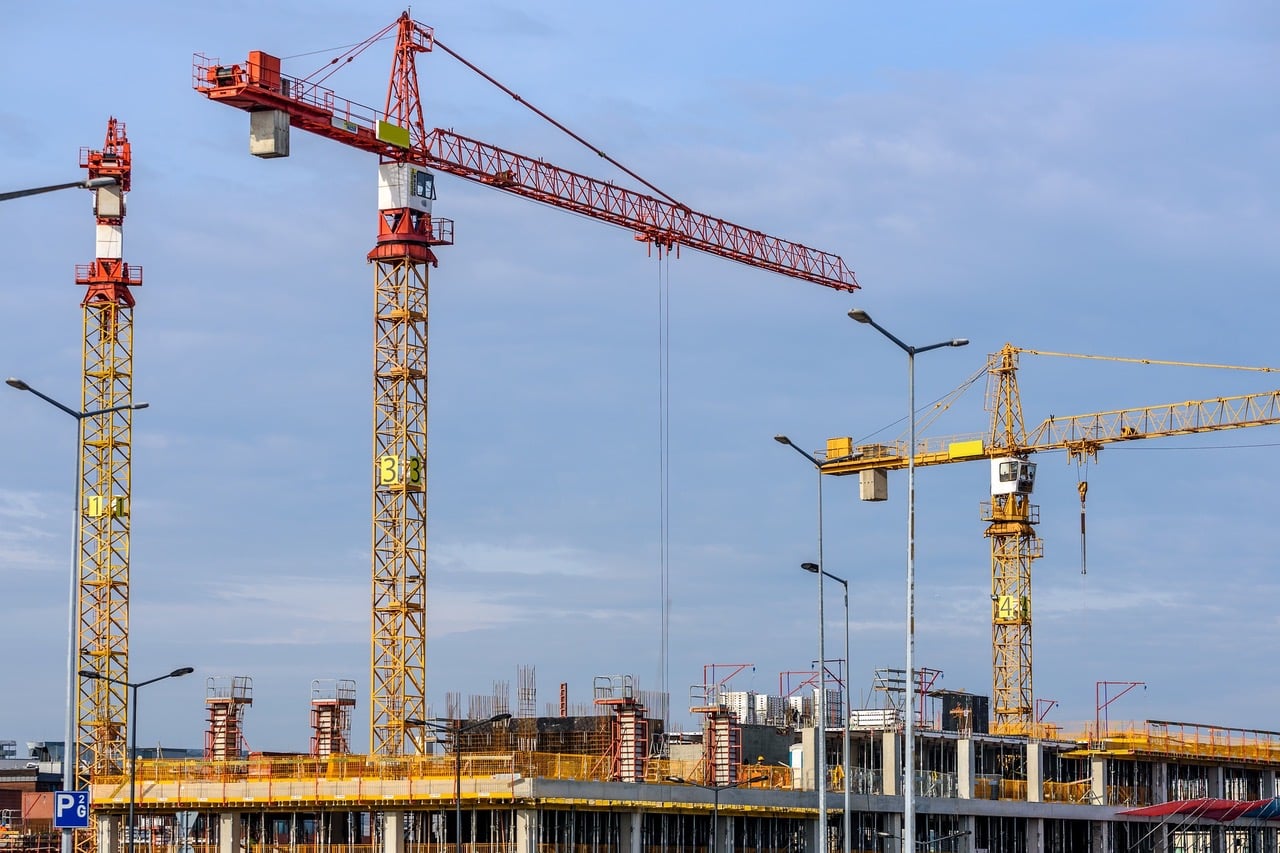After several years of intense growth, the Polish real estate market has seen a significant decrease, primarily caused by unfavorable economic and geopolitical factors. The total volume of investments reached €2.1 billion in 2023, compared to €5.8 billion the previous year. This is pointed out in the latest edition of The Polish Real Estate Guide 2024 by EY. However, there is a chance of a rebound in 2024. The decline in inflation observed for several months and the lack of interest rate increases have resulted in lower financing costs for new transactions. Adapting to ESG requirements and ensuring energy efficiency of buildings are critical challenges for the entire industry.
Although last year turned out to be much weaker for the real estate market than the previous ones, Poland is still on the radar of investors. In 2023, they made a total of 82 transactions worth €2.1 billion, compared to 122 (worth €5.8 billion) the year before. This result was influenced, among other things, by a lower percentage of investors from the USA. In 2023, it was only 13%, representing almost a tripling decrease compared to the previous year (33%). However, the proportion of European investors increased significantly – from 22% to 57% in 2023.
The warehouse property sector returned to the leader position as the area with the most investments on the Polish market after a year break. In 2023, it accounted for 46% of transactions, which was an increase of 12 percentage points compared to the previous year. The availability of modern warehouse space also increased – from 28.8 to 31.5 million m2, demonstrating that supply follows demand.
The office sector, the leader in 2022, registered a significant decline of 17 percentage points, falling to third place with a result of 20% of the total number of investments. The lack of new and attractive investments can be pointed to as one of the reasons. At the end of 2022, the total assets of modern office space in Warsaw and regional cities amounted to 12.7 million m2, but a year later it increased by only 0.2 million m2. The capital continues to lead the way. The most new office investments were made in Krakow (97 thousand m2), and Wroclaw (76 thousand m2).
The retail sector remains very stable, its result was only 4 percentage points lower in 2023 than in the previous year and reached 21%. New brands, including Lush, Candy Pop, Woolworth, and Zwieger, entered the Polish market in 2023. Poznan dominates in terms of retail density, with 725 m2 per 1,000 inhabitants, followed by Wroclaw, which has 100 fewer. Warsaw has significantly fewer – 504 m2.
The requirement to adapt to ESG requirements and care for energy efficiency will have a strong influence on the real estate market. Renovations are being undertaken more often now, and there’s an increase in the supply of certified green buildings.
The real estate sector is increasingly conscious of the necessity for changes and adapting to the EU’s policies. ESG issues will be a priority for all plays on the real estate market, including investors, owners, banks, insurers, and tenants. The actions of property owners and managers will be focused on increasing efficiency, which will lower operational costs.
The war in Ukraine caused restrictions in material supplies and decreased the availability of workers on construction sites. The tense geopolitical situation is both an opportunity and a threat to the Polish real estate market. The Ukraine conflict and geopolitical challenges in other regions do not encourage investment or finalizing transactions.
Additionally, the price expectations of sellers often did not coincide with the proposed transaction conditions by the buyers. On the other hand, the ongoing overhaul of the planning system and the introduction of the possibility of acquiring land under perpetual usufruct by specified groups of perpetual users had a direct impact on companies operating in the real estate market.
Currently, every real estate sector attaches significant importance to ESG issues. This is due, on the one hand, to EU directives on decarbonization, and on the other hand – to still high energy prices.
The implementation of eco-friendly solutions is of significant importance to the planet. Buildings in the European Union are responsible for nearly 40% of energy consumption and 36% of greenhouse gas emissions.
Also, EY’s Economic Analysis Team predicts GDP to grow by 3.7% in 2024 and 3.1% in 2025. Poland has been the leader in economic growth rate for several years, which is a strong asset in the eyes of foreign entrepreneurs.
Investors refrained from investment decisions last year, mainly due to high financing costs and unstable geopolitical situation. A significant challenge for the entire industry is adapting to ESG requirements and caring for the energy efficiency of buildings.
Currently, every real estate sector attaches great importance to ESG issues. This results from EU directives on decarbonization, and the still high energy prices. Property owners are more willing to invest in energy efficiency, which means tangible financial savings for them and attracts more investors.
The war in Ukraine has caused restrictions in material supplies and reduced the availability of workers on construction sites. Companies are still not fully coping with these challenges, and high inflation and rising costs are not helping them. The tense geopolitical situation is both an opportunity and a threat to the Polish real estate market.
